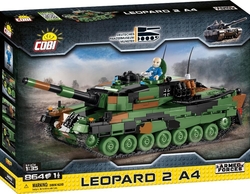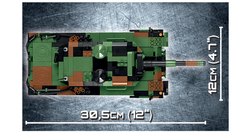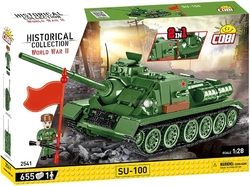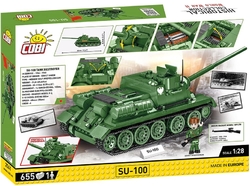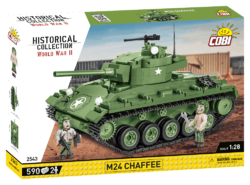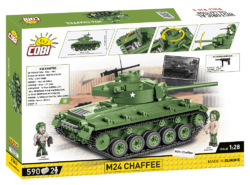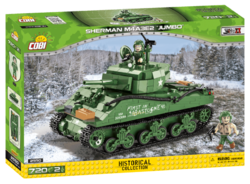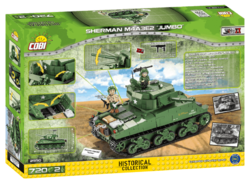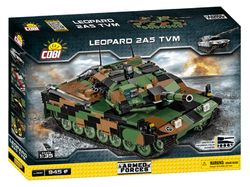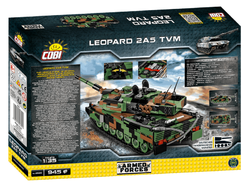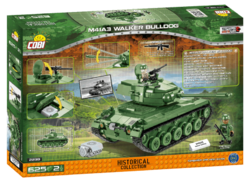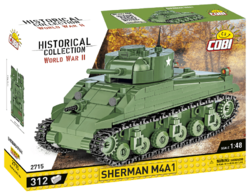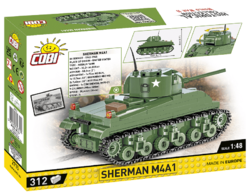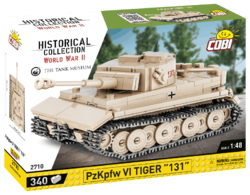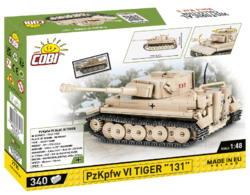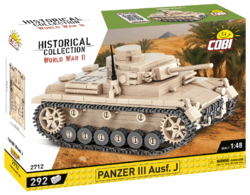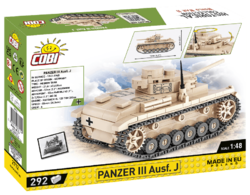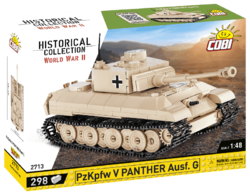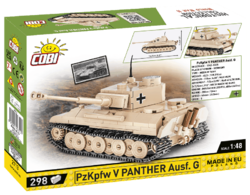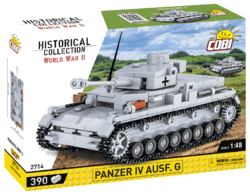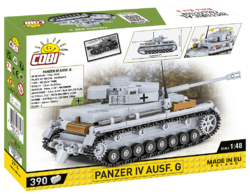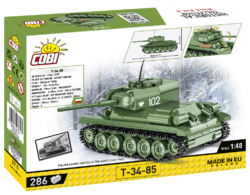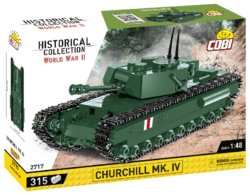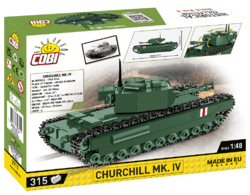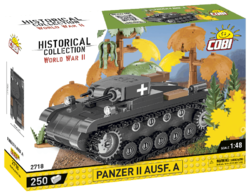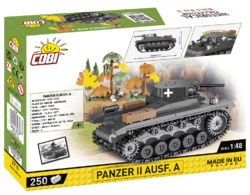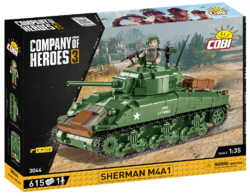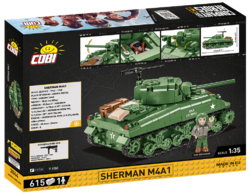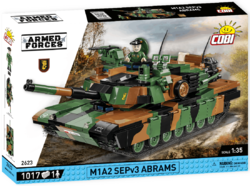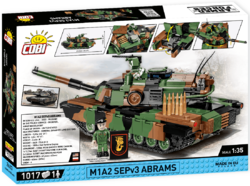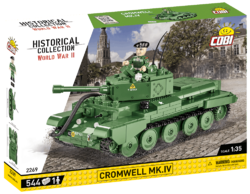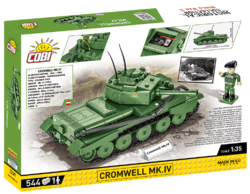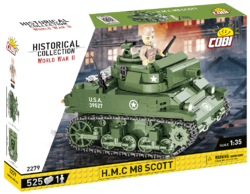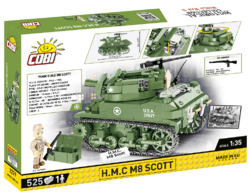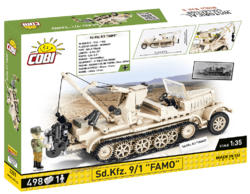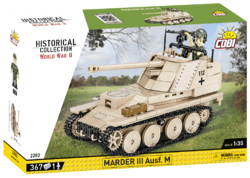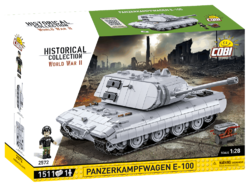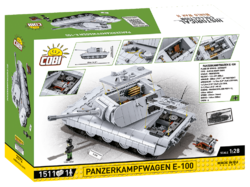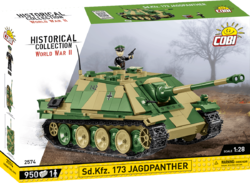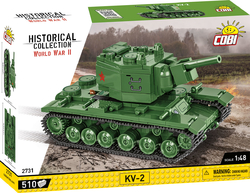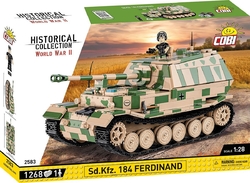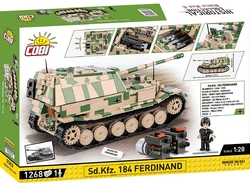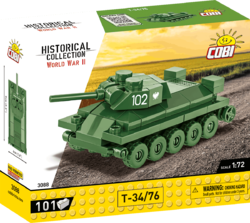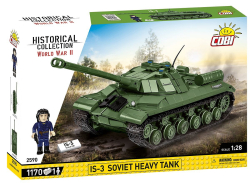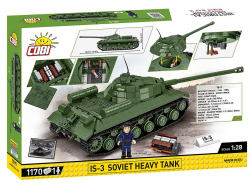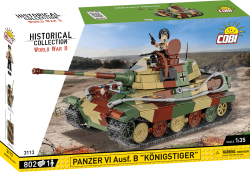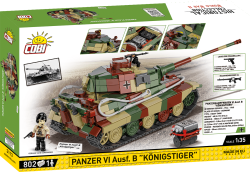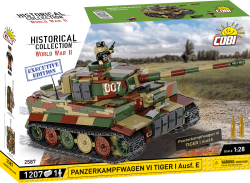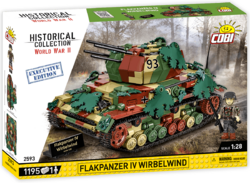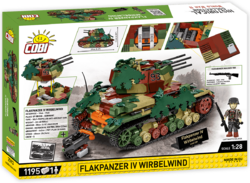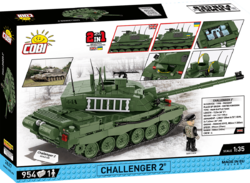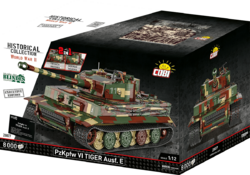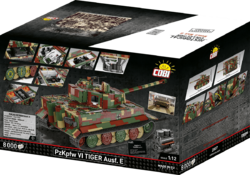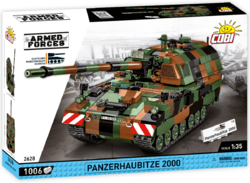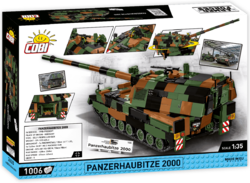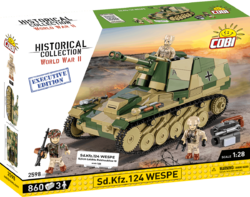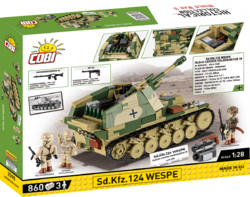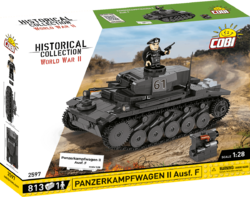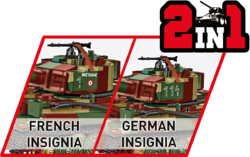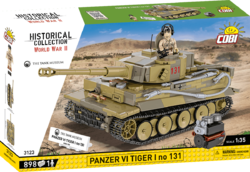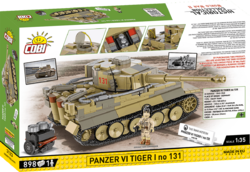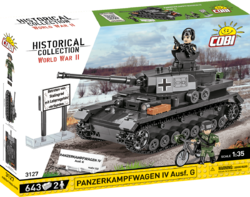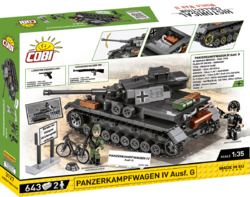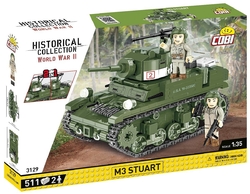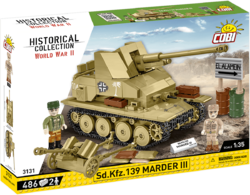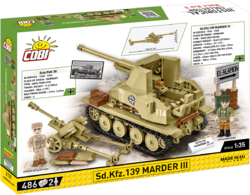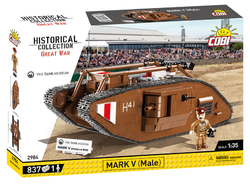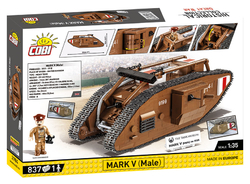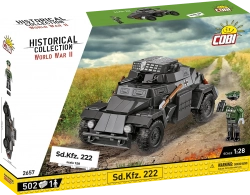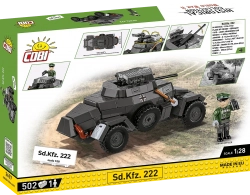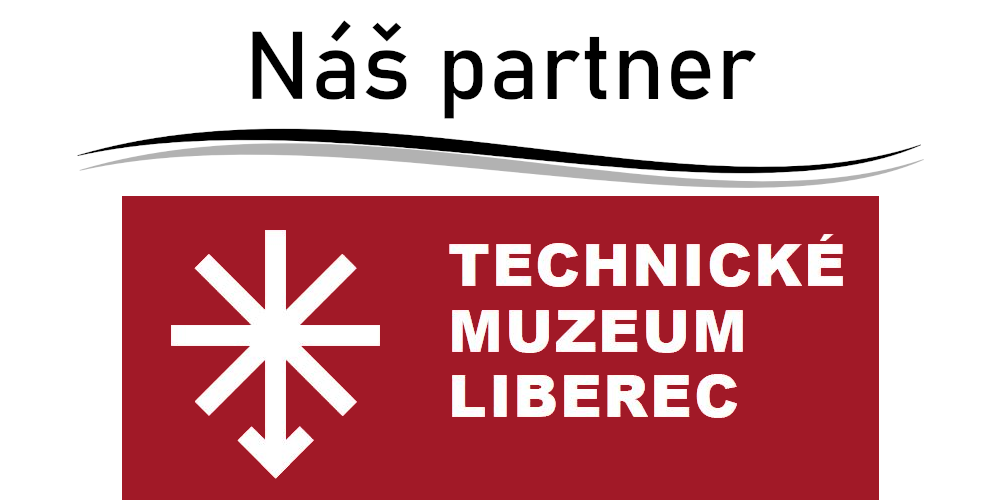German self-propelled rocket launcher 38 cm Sturmmörser TIGER Sturmtiger COBI 2585 - World War II 1:28
Kit of the German rocket launcher Sturmtiger RW61 AufS. in field camouflage. The model is equipped with a missile loading arm, there is an opening hatch hatch in the rear wall of the tower and a Maybach HL 230 engine is located under the removable cover. Inside the tank tower is a gunner's charging holder. The package includes a figure of a German soldier-mechanic, a set of 3 Hohladungsgranate rocket missiles and a cube with a description.
Show more
0 %
(0 Ranking)
1 790 Kč
pcs
Add to Cart
In stock - ready to ship (2 pcs)
| List Number: | COBI-2585 |
| EAN: | 5902251025854 |
| Warranty: | 24 months |
| Manufacturer: | COBI |
| Loyalty Points: | 17 |
| Price excluding VAT: | 1 479,00 Kč |
Description
Parametres
Files and Links
Discussion
Reviews

You know that:
- The history of the Sturmtiger begins on 20 September 1942. After the experience of the Battle of Stalingrad, when it was clear that the German army did not have the means to destroy heavily fortified bunkers.
- In September 1943, Krupp's designers had the idea to combine a 380 mm rocket launcher for battleships with a Tiger I heavy tank chassis.
- The start of production was subject to the approval of Hitler himself. The first three production units were completed by the commissioned company Alkett in August 1944.
- The Führer was delighted and ordered a minimum of 300 rockets per month to be produced for these machines.
- The huge RW 61 rocket launcher was mounted on a massive ball-bearing, fixed-cap rocket launcher. If you are wondering why there are regularly spaced holes in the barrel wall, know that their purpose was absolutely crucial. The rocket generated 40,000 kg of pressure on the breechless cap during launch, and the only way to prevent the machine from destroying itself during firing was a double-walled barrel with exhaust.
- Two types of missiles were used for firing, the Sprenggranate 4581 and the Hohladungsgranate 4582 for the heaviest targets with penetrations up to 2.5 m of reinforced concrete.
- Charging the rocket launcher was not an easy job. Each missile, 150 cm long and weighing 350 kg, had to be loaded into the machine by crane.
- The ammunition racks inside the Sturmtigeer could hold a total of 12 rounds, plus one more could be stored directly in the barrel. It took the crew several hours to reload the machine.
- Firing wasn't easy either. The missile was loaded into the barrel by an internal crane and with the help of a special tool that helped to rotate the heavy missile so that it fit exactly into the barrel grooves.
- The Sturmtiger shooter also needed one special tool for a successful hit. A thermometer. The ambient temperature had a great effect on the rate of burning of the rocket fuel, which affected the range. The colder it got, the less range it had.
- Missile fire was very destructive. In January 1945, near Düren, a Sturmtiger destroyed three Shermans with a single shot.
- In total, only 18 were produced. Of this number, only 3 have survived.
- The 1001st Sturmtiger Company also included several Sd.Kfz. Goliath, which were mostly used for clearing access roads and destroying objects up to 1000 m away. Equipped with a Zündapp motorcycle engine and 60 kg of explosives, the minitank was guided to the target by the operator using a wire control. The connecting cable was wound inside the minitank. During homing, the cable was unwound at the speed of travel so that it could not jam.
Technical parameters Sturmtiger:
- dimensions: length 6.28 m, width 3.57 m, height 2.85 m
- weight 65 000 kg
- armor 25 - 250 mm
- power unit petrol 12-cylinder Maybach HL 230 P45 engine with an output of 478.1 kW
- road speed 37 km/h off-road up to 25 km/h
- driving range 120 km
- number of gears 8 forward + 1 reverse
- armour plating up to 100 mm
- main armament rocket launcher RW 61 L/5,4 calibre 380 mm
- secondary armament MG 34 and MG 42 machine gun
American soldier Joe Ernest Esquibel on meeting Sturmtiger at Remagen:
"I've never seen anything like it. It was a huge tank with a huge gun turret. When it fired at us, it was like a bomb dropped on us. I was lucky to be in the rear of the column. Four tanks exploded like matches in front of us. It was a nightmare."
Assembly Instructions
| Version (series) | 03/2024 |
|---|---|
| Number of figurines | 1 pcs |
| Scale | 1 : 28 |
| Number of pieces | 1100 pcs |
| Package weight | 1340 g |
| Dimensions after assembly | 23 x 13 x 13,5 cm |
| Box dimensions | 45 x 30 x 7 cm |
| Recommended age | 9+ |
| Contains luminous blocks | No |
| Material | Plastic |
| Collection | World War II |
| Compatible with other brand of kits | Yes |
Discussion is empty.
There is no review for product yet











































